Our Library
Explore our publications, from research papers and series to educational materials, covering all aspects of conflict transformation and peace promotion.

Social Change and Conflict TransformationHandbook Dialogue Series No. 5 - complete
In his lead article, Christopher Mitchell, Professor Emeritus of George Mason University’s Institute for Conflict Analysis and Resolution (ICAR), sets out a framework for thinking systematically about the relationship between conflict and (social) change. He considers necessary changes to bring about the resolution of conflict, as well as obstacles to such changes, and envisions possible roles for agents of change. Five authors have expanded on, and critically reviewed, this lead article: Ed Garcia (International Alert), Chris Spies (UNDP Guyana), Ilana Shapiro (University of Massachusetts), Vivienne Jabri (King's College London) and Daniela Körppen (Berghof Peace Support).
- Year2006
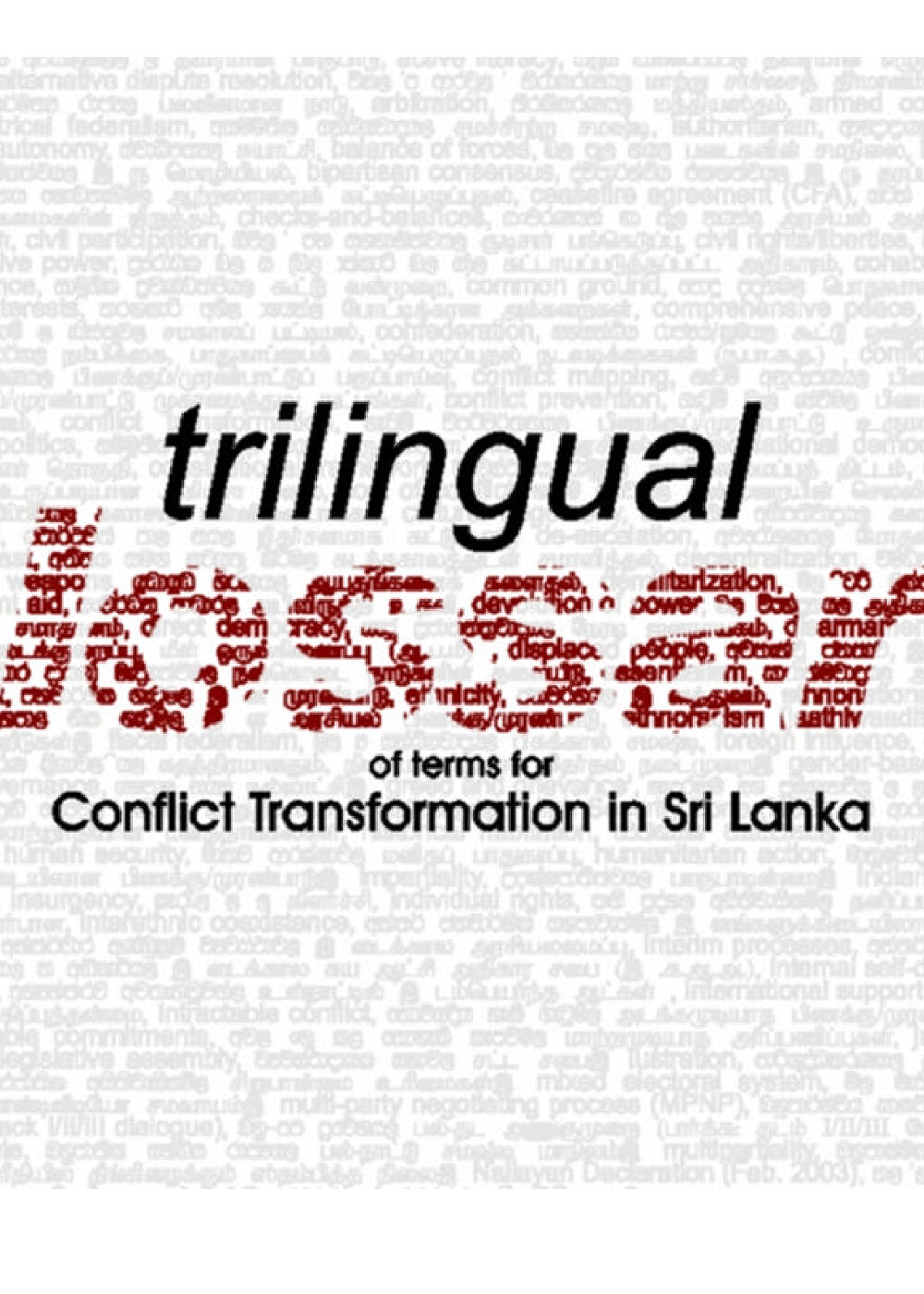
Trilingual Glossary of Terms for Conflict Transformation in Sri Lankaලංකාවේ ගැටුම් විපරිවර්තනය ත්රෛභාෂා පාරිභාෂික ශබ්ද කෝෂය / இலங்கையில் மோதுகை மாற்றுநிலையாக்கத்திற்கான அருஞ்சொற்பதங்கள்
Trilingual Glossary of terms for Conflict Transformation in Sri Lanka
ලංකාවේ ගැටුම් විපරිවර්තනය ත්රෛභාෂා පාරිභාෂික ශබ්ද කෝෂය
இலங்கையில் மோதுகை மாற்றுநிலையாக்கத்திற்கான அருஞ்சொற்பதங்கள்
- Year2006
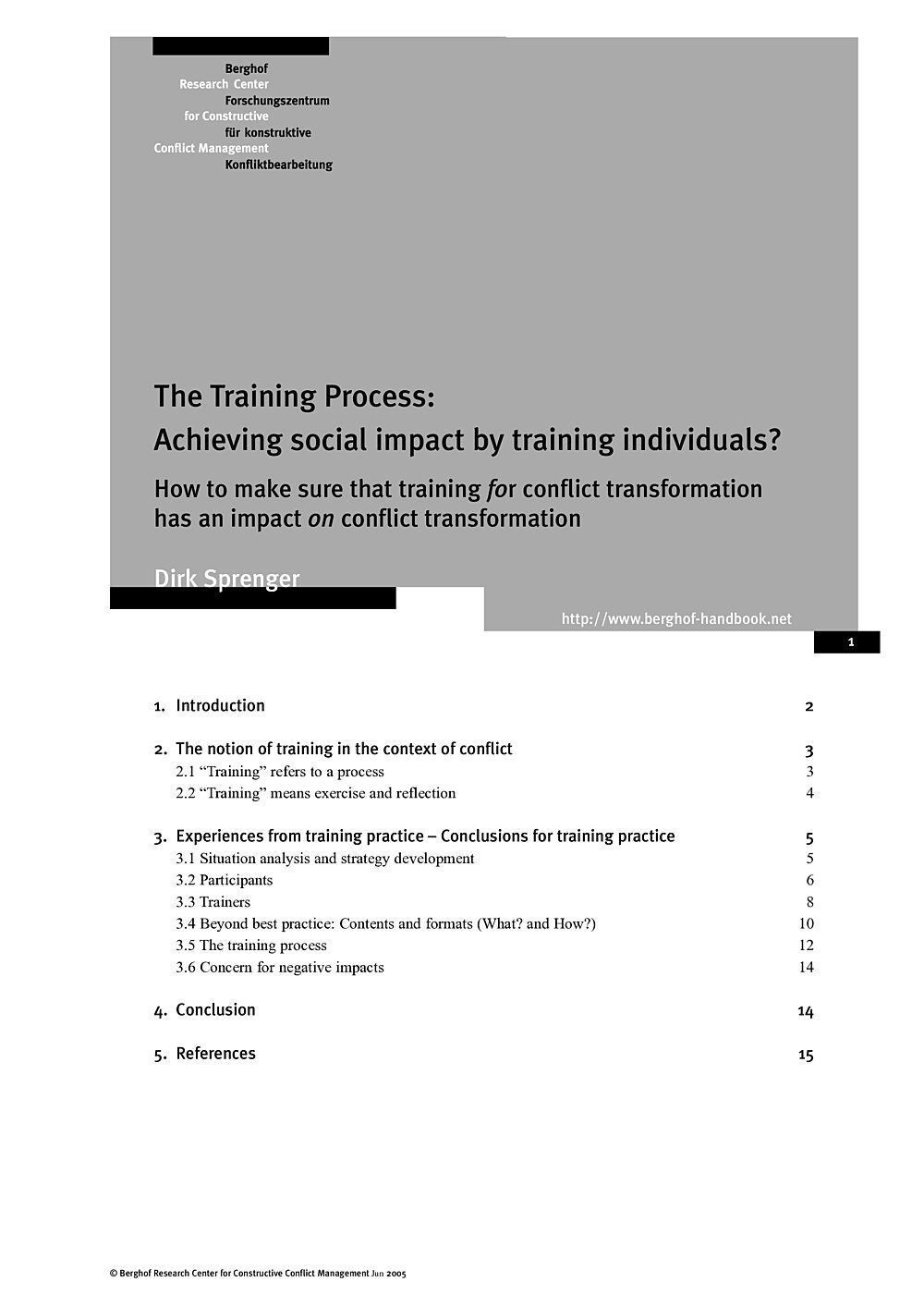
The Training Process: Achieving Social Impact by Training Individuals?Handbook Article
- Year2005
- Author(s)Dirk Sprenger
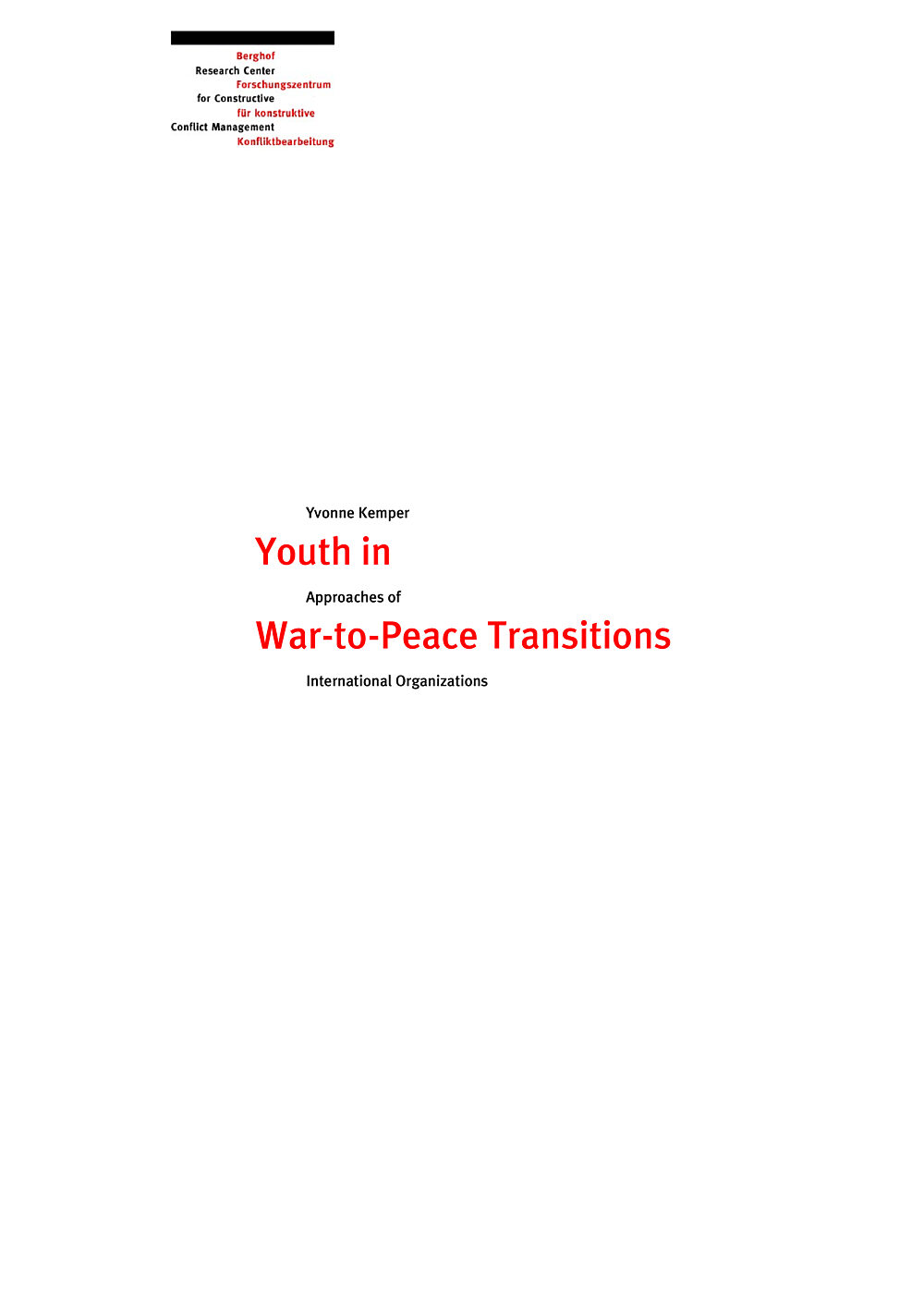
Youth in War-To-Peace TransitionsApproaches of International Organizations (Report Nr. 10 )
This study deals with youth in war-to-peace transitions and the response of international organizations to them. While youth’s relevance for societal transformation is a long-acknowledged fact, their large numbers and potential roles in conflict have recently caused organizations to consider them a target group for peace and development programs. Reflecting on this process, this study thus assesses the difficulties in conceptualizing the role of youth in peace-building processes on the one hand and the concrete efforts of international organizations to integrate them into their policies and programs on the other. For this purpose, it explores four guiding questions: First, what approaches have international organizations developed regarding youth? Second, on which assumptions about youth and their role in violent conflicts are they based? Third, how do the different approaches affect program development, and, fourth, are they are compatible?
- Year2005
- Author(s)Yvonne Kemper
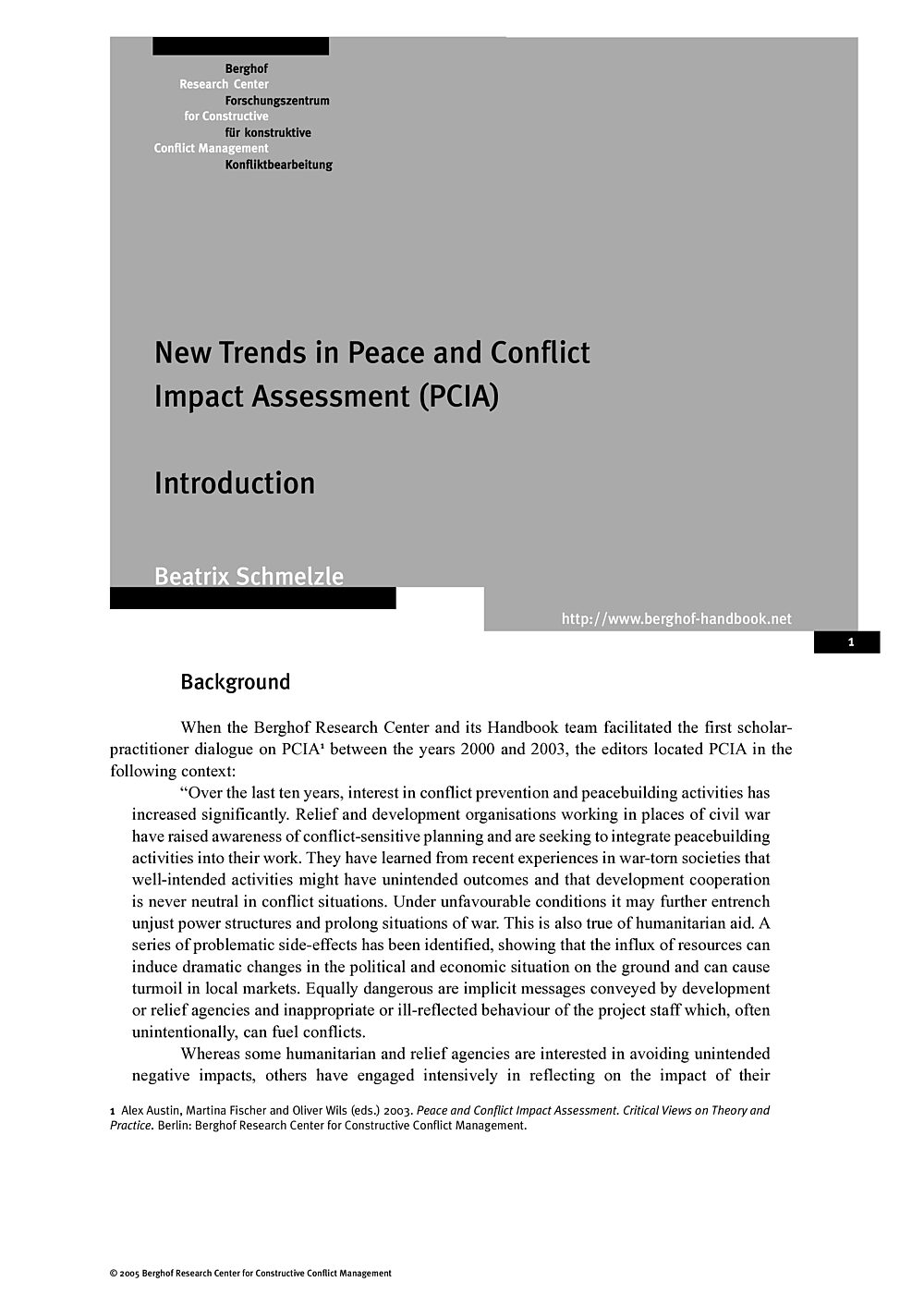
New Trends in PCIAHandbook Dialogue Series No. 4 - complete
Questions of effectiveness, impact and evaluation continue to be most relevant for the field of peacebuilding and conflict transformation: Adam Barbolet, Rachel Goldwyn, Hesta Groenewald & Andrew Sherriff report with intimate knowledge on the development of "conflict sensitivity" as an alternative to PCIA; Kenneth Bush sends thought-provoking "field notes", reflecting on his learning in the context of applying PCIA in the South; Thania Paffenholz presents a comprehensive overview of the "Aid for Peace Approach". Short reflection papers by all authors shed light on progress and controversy regarding the new trends in peace and conflict impact assessment.
- Year2005
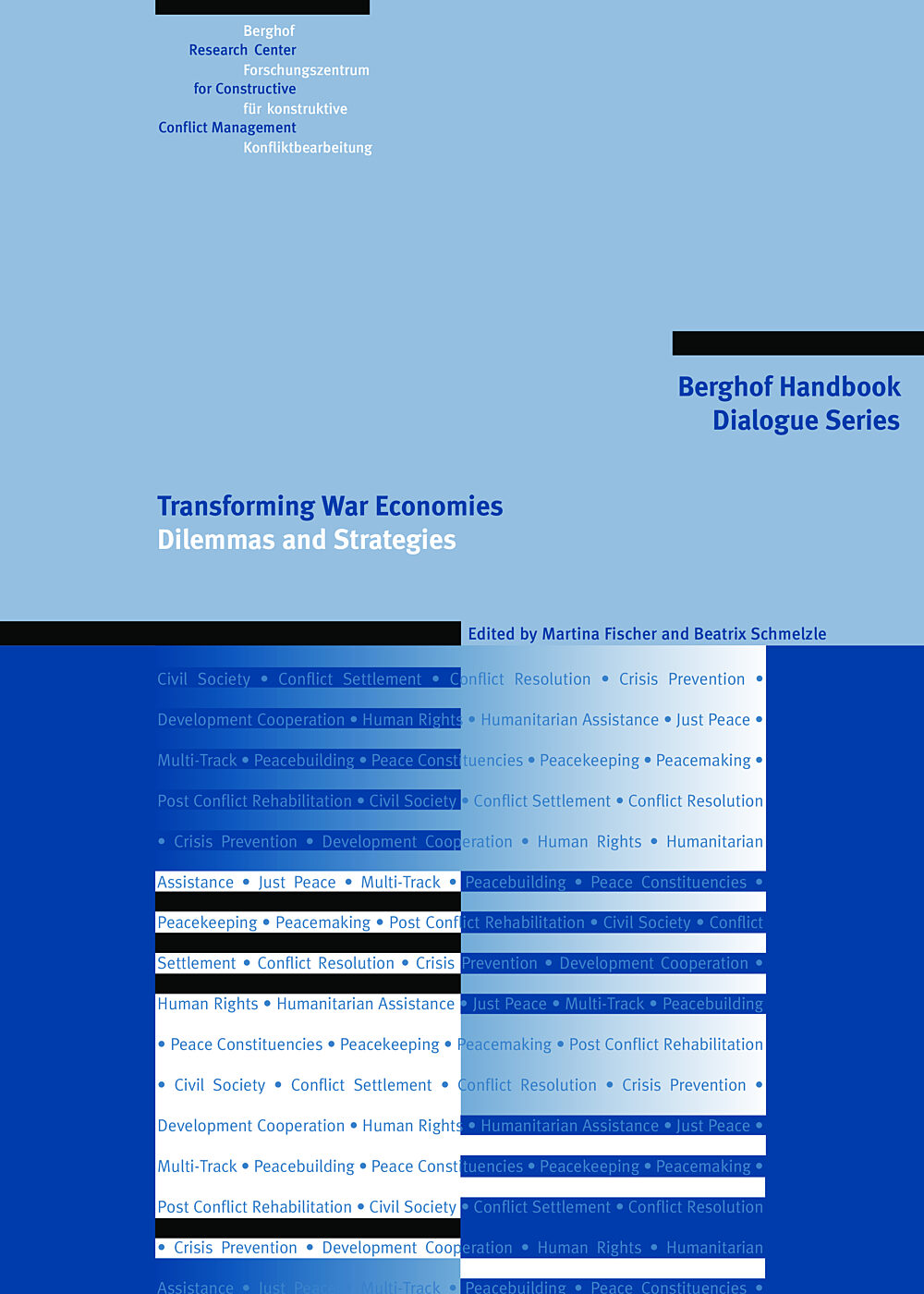
Transforming War Economies: Dilemmas and StrategiesHandbook Dialogue Series No. 3 - complete
This Dialogue sets out to assess the usefulness of current analytic approaches and policy recommendations in dealing constructively with war economies. Starting off with an overview of the state of the debate by Karen Ballentine and Heiko Nitzschke, respondents from a broad variety of backgrounds add their reflections, strategies and critique.
- Year2005
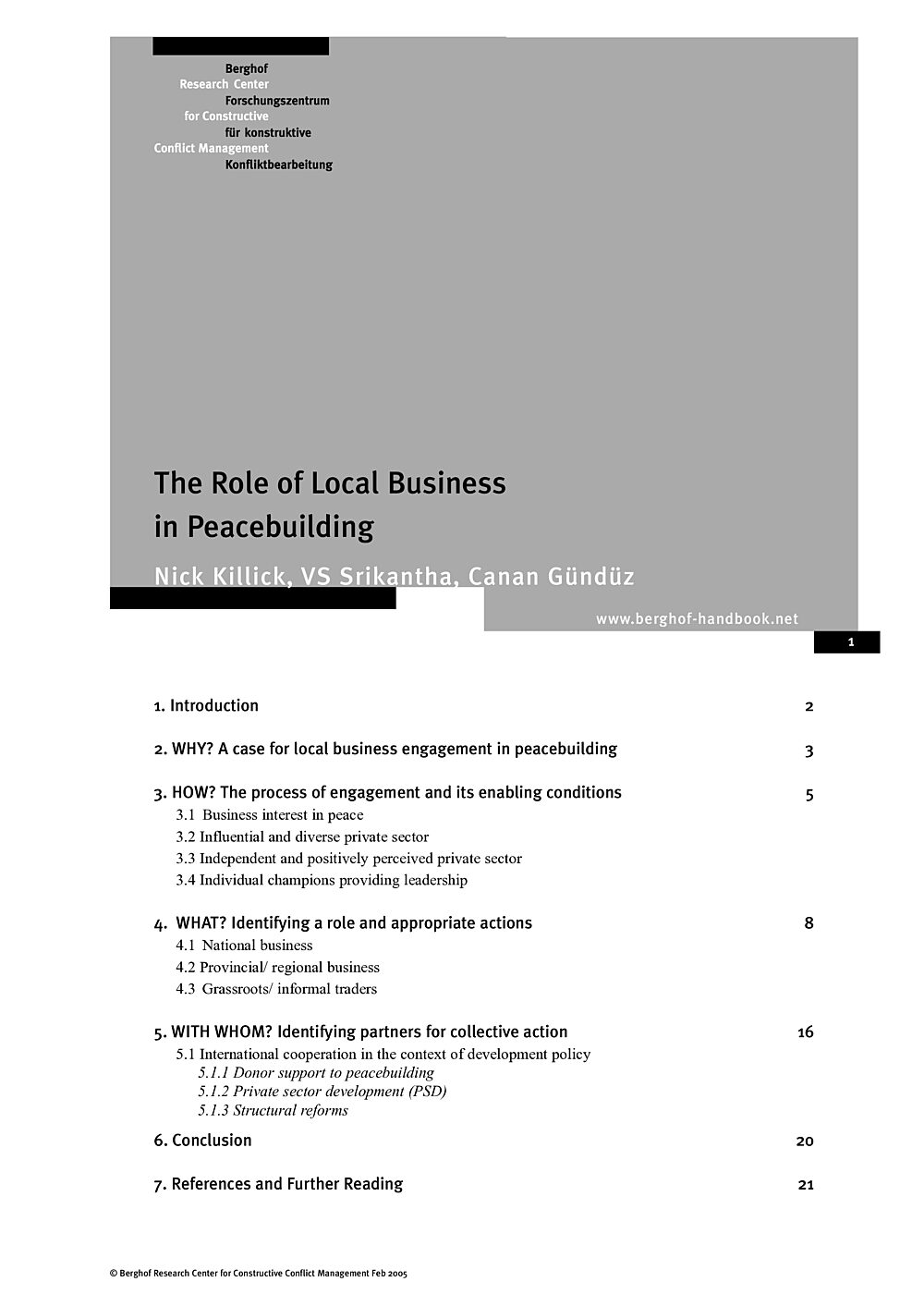
The Role of Local Business in PeacebuildingHandbook Article
- Year2005
- Author(s)Nick Killick, VS Sriantha, Canan Gunduz
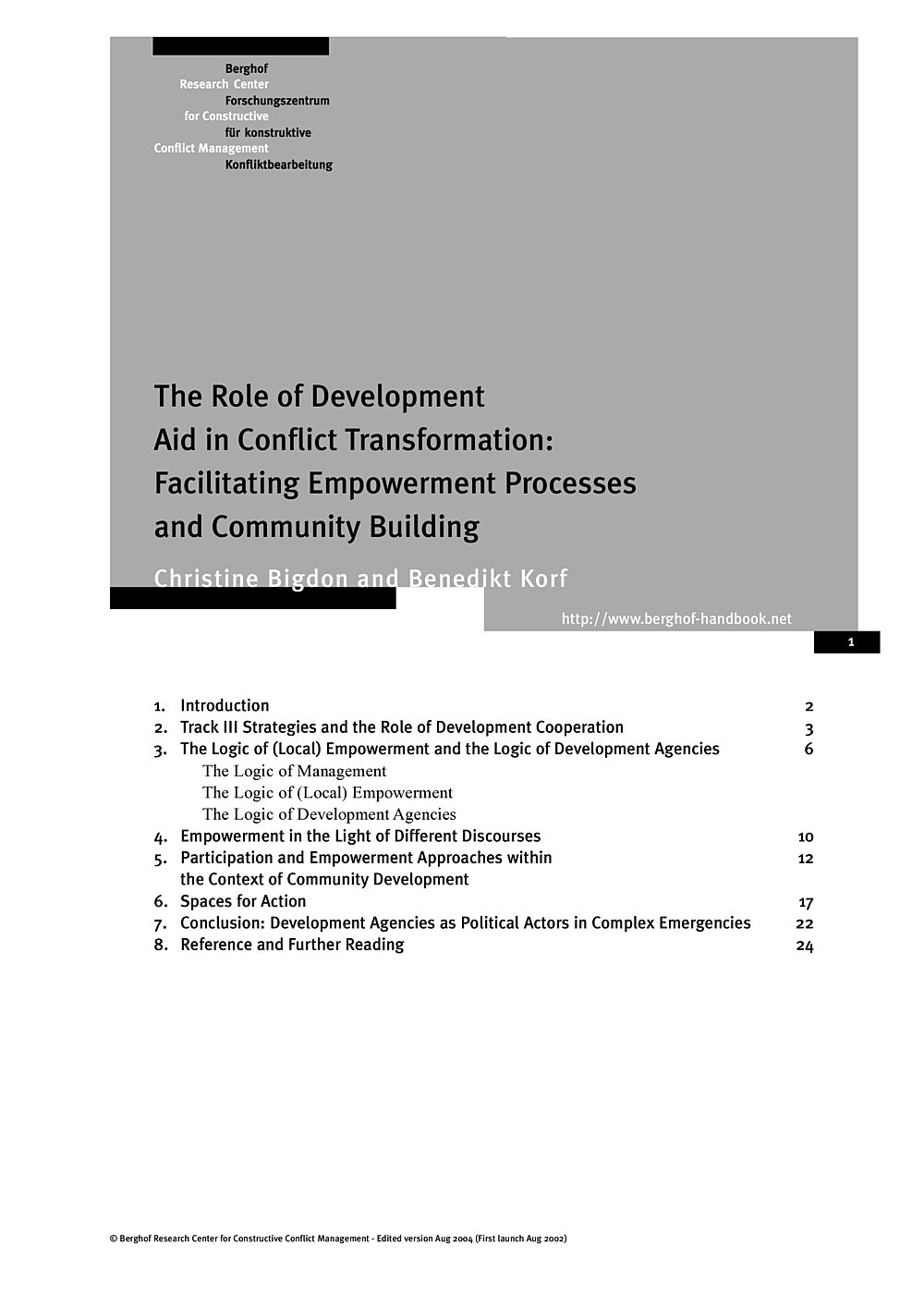
The Role of Development Aid in Conflict Transformation: Facilitating Empowerment Processes and Community BuildingHandbook Article
Highlights the role of development assistance for the structural aspects of peacebuilding. Exploring the nexus between participation, empowerment and conflict transformation, the authors critically discuss the potential of common participatory approaches at the community level and their impact for conflict transformation on the local level. (revised for 2004 print edition).
- Year2004
- Author(s)Christine Bigdon, Benedikt Korf

Designing Transformation and Intervention ProcessesHandbook Article
- Year2004
- Author(s)Thania Paffenholz

From Resolution to Transformation: The Role of Dialogue ProjectsHandbook Article
Presents dialogues as the classical means of constructively dealing with conflicts. The author gives an overview of ideal types and identifies the basic elements of most dialogue processes. He discusses dialogue in the context of various other approaches in order to establish criteria for measuring success. (revised for 2004 print edition)
- Year2004
- Author(s)Norbert Ropers